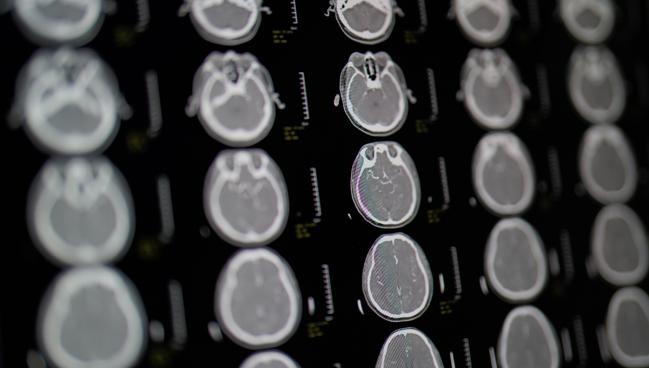MR CLEAN-LATE Affirms 24-Hour Window Safe for Endovascular Stroke Therapy
The study, which selected patients with good collaterals, expands the population eligible for this life- and brain-saving therapy.

Patients presenting with ischemic stroke within 6 to 24 hours of symptom onset or last seen well can safely undergo endovascular treatment if they have good collateral flow on CT angiography (CTA), the MR CLEAN-LATE trial suggests.
Prior trials like DAWN and DEFUSE 3, which changed guidelines to widen the treatment window from 6 to 24 hours, have already made many of these patients eligible for mechanical thrombectomy. But the new data, previously presented in October at the World Stroke Congress 2022, confirm the safety and efficacy of treatment for this cohort.
“By primarily selecting collaterals, you will get a larger population than you would currently select,” lead author Susanne Olthuis, MD (Maastricht University Medical Center, the Netherlands), told TCTMD. She also noted that because the inclusion criteria for both DAWN and DEFUSE 3 were much more selective than in MR CLEAN-LATE—the latter did not require perfusion imaging or ASPECT scoring and had no upper age limit—the current findings allow for more-pragmatic patient selection and a wider array of patients eligible for treatment.
Tudor Jovin, MD (Cooper University Health Care, Camden, NJ), who commented on the findings for TCTMD, agreed. “This is a step in the right direction, and a logical consequence of the developments triggered by DAWN,” he said. “DAWN had identified too restrictive of a patient population, and now we are trying to expand that population and find out where the limits are. To our surprise, we're learning that we still haven't found the outer limits of benefit for these patients. MR CLEAN-LATE is a step along this journey.”
The findings were published online last week in the Lancet.
Better Functional Outcomes With Treatment
For MR CLEAN-LATE, Olthuis and colleagues randomized 535 patients presenting with ischemic stroke between 6 and 24 hours after symptom onset or being last seen well to receive endovascular treatment or no endovascular treatment on top of best medical treatment between February 2018 and January 2022. All patients had a large-vessel occlusion in the anterior circulation, collateral flow on CTA, and a neurological deficit score of at least 2 on the National Institutes of Health Stroke Scale.
The median modified Rankin Scale (mRS) score at 90 days (primary outcome) was lower for those who received endovascular treatment than for controls (3 vs 4), and this endpoint was generally better with endovascular treatment (adjusted common OR 1.67; 95% CI 1.20-2.32).
There was no difference observed in all-cause mortality between the groups (24% vs 30%; adjusted OR 0.72; 95% CI 0.44-1.18). However, there was a higher rate of symptomatic intracranial hemorrhage in those receiving endovascular treatment (7% vs 2%; adjusted OR 4.59; 95% CI 1.49-14.10).
Because CTA is generally more widely available than perfusion imaging, the authors write that their results “promote late-window endovascular treatment for patients in centers or countries that have limited access to perfusion imaging.” Additionally, they say, the findings “support the notion that the selection of patients for endovascular treatment in the late window could be primarily based on the presence of collateral flow.”
Infarct Size Might Not Matter
However, Jovin said he doesn’t put as much weight in the concept that the patients in this study had success with endovascular treatment due primarily to their good collateral flow. “I am a bit disappointed that they felt the need to use collaterals as proof of a small infarct,” he said. “I believe in simplicity, and I think, honestly, that that was unnecessary. Had they just used ASPECT scores or just plain CT infarct volume data, they would have been able to probably find the same results. So, I am not sure how much this collateral issue has contributed to the results of the study.”
Rather, what he takes from the study is that “reperfusion has such a strong clinical benefit that it doesn't really matter how big your infarct—that the size of the infarct may be something that is more or less secondary—and that the benefits of reperfusion are there sort of regardless,” Jovin said. While no data are currently available on the largest of infarcts, he added, the MR CLEAN-LATE findings confirm what has been seen in other trials—“that you don't have to be that precise in determining how large the infarct is.”
Moreover, Jovin said that collaterals can be viewed as “indicators of mismatch.” What the MR CLEAN-LATE study showed, he said, is “that if you have collaterals, you benefit. But they have not shown that if you don't have collaterals, you don't benefit. That's a very, very important distinction.”
Olthuis agreed. “Our theory was, of course, based on studies showing that patients with better collaterals have larger treatment effects,” she said. “So that is why we excluded these patients without collaterals. But actually we do not know. Perhaps these could also benefit. We cannot say anything about it because we did not investigate this group. . . . We cannot say: ‘you shouldn't treat patients without collaterals.’ We can only say: ‘you should treat patients with collaterals.’”
It could potentially be worth studying only patients without collateral flow, Jovin said. However, “my concern has been that as we cherry-pick these high responders, we're going to be left with populations where the response may not be that strong. So you are going to need to enroll a lot of patients to show benefit,” he said. “I think we've done it the wrong way, quite frankly. . . . We should have started out totally inclusive—take all patients within 24 hours. Probably, we would have had smashing benefit. And then try to find out through subgroup analyses who are the ones who don't benefit.”
But he credits the trial with highlighting the advantages of a simple approach to patient selection, especially using tools like CTA. “That's great news because a lot of hospitals in this world, if we look globally at endovascular centers, many don't have 24-7 perfusion capabilities, MRI imaging capabilities,” Jovin said. “This trial is basically proving that they are not necessary.”
Another take-home message from the study, though potentially obvious, Olthuis said, is that “our results do not show that you have more time in treating strokes. So, it is not that because you can now treat patients with collaterals up to 24 hours that you should take your time, because time is brain. It just means that for the patient [presenting within] 6-24 hours, urgency is still very important.”
Yael L. Maxwell is Senior Medical Journalist for TCTMD and Section Editor of TCTMD's Fellows Forum. She served as the inaugural…
Read Full BioSources
Olthuis SGH, Pirson FAV, Pinckaers FME, et al. Endovascular treatment versus no endovascular treatment after 6-24 h in patients with ischaemic stroke and collateral flow on CT angiography (MR CLEAN-LATE) in the Netherlands: a multicentre, open-label, blinded-endpoint, randomised, controlled, phase 3 trial. Lancet. 2023;Epub ahead of print.
Disclosures
- The MR CLEAN-LATE trial was funded through the CONTRAST consortium.
- Olthuis and Jovin report no relevant conflicts of interest.





Comments